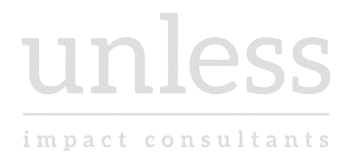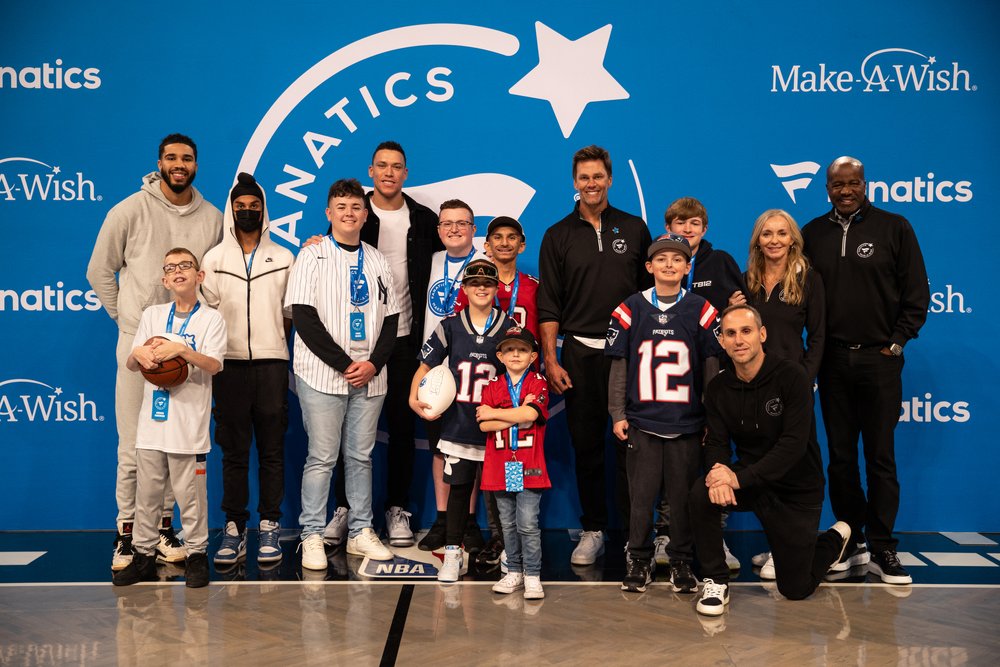Do you remember the Wizard of Oz? Almost every character was convinced the Wizard was “great and powerful.” At the end, we discovered he was just a dude behind a curtain with some really good tech (for the 1930s).
He did offer up some wisdom. He just failed to meet the hype or expectation.
Much like the Wizard, professional sports leagues can seem “great and powerful,” especially when it comes to their corporate social responsibility (CSR) initiatives. They have three key ingredients for CSR success – celebrity, promotion and money. Hence, many of their actions are noticed, such as when NBA players refuse to take the court in support of social justice; over 1,000 NFL players wear their cause on their cleats; and 50,000 MLB fans fill the stadium with Stand Up to Cancer signs.
It makes sense for leagues to be so invested. The data is compelling:
- 77 percent of consumers are more motivated to purchase from companies committed to positive change
- 73 percent of people are more forgiving towards purpose-driven companies, even in the face of mistakes
- Gen Z, ever growing as a driving force in the market, is 300 percent more likely than previous generations to believe that businesses should serve communities and society
However, I’m curious to see what these leagues looks like when we pull back the curtain.
For our purposes here, “Corporate Social Responsibility” is defined as a company’s acknowledgement there is more to running a successful business than simply making as much money as possible, shown by a commitment to improving life in the workplace, marketplace and community.
Let’s examine some of the wealthiest leagues from around the world, with a particular emphasis on their websites, as those serve as their “front door” for fans and consumers.
National Football League (annual revenues: $12 billion)
No surprise, but the NFL offers a robust social impact presence on NFL.com. The Shield’s priorities include social justice, physical activity, digital education, cancer, veterans, youth football, character, the environment and domestic abuse. The NFL also has a foundation which awards grants in each of those priority areas and funds dedicated employees for both the NFL Foundation and the league’s CSR activities. The NFL has also embraced sustainability by focusing on food recovery, community greening, material recovery, recycling, solid waste management and green energy.
Created in 1993, the league’s NFL Green initiative is a participant in the United National Sports for Climate Action Framework.
For a deep dive, the NFL Social Responsibility Report, published annually since 2016, is an excellent source of specific details on programs supported, funding provided and ROI on those partnerships and grants.
National Basketball Association ($10.5 billion)
Anecdotally, the NBA has invested more time and resources into corporate social responsibility than other leagues. The league makes it easy for fans to find and track their pursuits on NBA.com with their Social Impact Hub taking users to a page dedicated to NBA Cares, NBA Foundation, National Basketball Social Justice Coalition, NBA Diversity and Inclusion and NBAxHBCUs. Like the NFL, the NBA has dedicated staff for their foundation and the league’s many CSR initiatives.
NBA Green is their program that addresses sustainability, and the league is a participant in the United National Sports for Climate Action Framework.
It also publishes an NBA Social Impact Report each season that’s a worthwhile read.
Indian Premier League ($10.9 billion)
The Mumbai-based IPL is a cricket league comprised of 10 city-based team franchises. Interestingly, IPL’s website does not share details about a foundation or corporate social responsibility activities, and neither does the governing body, Board of Control for Cricket in India (BCCI). Instead, they both focus completely on behavioral policies or “Integrity Initiatives” – anti-doping, anti-discrimination and anti-corruption.
In 2016, The Telegraph Online reported the IPL was getting into CSR (“IPL looks at CSR Model”), and India-based media have touched on some of the IPL’s efforts (such as here and here), however, there is nothing online revealing IPL’s model, goals or concrete steps taken. Nor, does the league site identify any employees responsible for a foundation or corporate social responsibility on their site or via any marketing materials.
That said, the IPL has taken a stance on sustainability including Green Protocol, a zero-waste concept, and in supporting UN Environment. Unfortunately, they are a prime example of a league or NGB missing an opportunity to showcase their CSR work to fans and make it accessible for supporters to volunteer or contribute.
Major League Baseball ($10.3 billion)
MLB launched a new initiative this season called MLB Together, as the league’s platform to operate seven CSR “pillars”: Youth Empowerment, Diversity, Equity & Inclusion, Domestic & Physical Safety, Health Research & Resources, Military Family & Veteran Resources, Disaster Relief and MLB+Green. There are staff to manage the Youth Development Foundation and their CSR activities.
Opposite of IPL, MLB does a nice job highlighting 20 different partners and platforms where fans are provided links to volunteer and/or donate.
The league addresses sustainability through MLB+Green while being a member of the Green Sports Alliance as well as a Council for Responsible Sport partner.
Their most recent annual report is the 2022 Community Impact Report.
Premier League ($6.8 billion US)
The social impact work of the Premier League is easily accessible found atop the home page under “Football and Community.” The league is pursuing initiatives like Wider Football, No Room for Racism and Rainbow Laces. It focuses on areas of mental health, youth development and community. The Premier League Charitable Fund is an independent entity that distributes funds to community club organizations, but the league does not reveal staff members dedicated to corporate social responsibility or a foundation.
Sustainabilitywise, the EPL is also a participant in the United National Sports for Climate Action Framework.
The Premier League’s 2022 Economic and Social Impact Report is authored by Ernst & Young.
National Hockey League ($6 billion)
At NHL.com, a click on “Community” in the main navigation reveals the league’s social commitments which include: United By Hockey, Player Inclusion Coalition, Power Players, Hockey Fights Cancer, NHL Green, NHL Street, Learn to Play and Future Goals. The league, which has been using the tagline “Hockey is for Everyone” as its umbrella since 2018, highlights stories reflecting their community-based activities and charitable endeavors.
There is a foundation but strangely, besides a cursory mention on the About Us page, evidence of it does not exist on the league’s site. There are employees dedicated to the foundation and corporate social responsibility activities.
NHL Green leads the league’s effort in sustainability, which is focused on following the UN’s Sustainable Development Goals with the league’s own Environmental, Social and Governance (ESG) goals, while the league is also engaged with the Green Sports Alliance and Sports for Climate Action.
The league released a Diversity and Inclusion Report in 2022.
Formula 1 ($2.5 billion)
Formula 1 maintains two websites. The non-corporate site contains fan-centric information but no evidence of a foundation or CSR. At the bottom of the homepage, there are links to policies for bribery and human rights. The corporate site hosts CSR activity under “Impact” in the main navigation and contains information about Net Zero Carbon, Positive Change and Diversity & Inclusion. There is at least one employee dedicated to social impact. Of note, F1 launched its sustainability strategy in 2019 and has committed to being carbon neutral by 2030.
In 2022, the entity released their latest Sustainability and Diversity & Inclusion Report.
La Liga ($2.1 billion)
The second largest football (or soccer) league has the most website links of the sites reviewed. However, there are no obvious links to information about the foundation which focuses on education, training, social inclusion and sustainability, nor does the league identify individuals responsible for the foundation or CSR; however, they obviously have to exist.
Fair Play Social is their comprehensive effort to integrate CSR across all of its clubs, while Environmental Fair Play is an initiative make football part of the solution for the environmental crisis.
The league issues a sustainability report, and this season La Liga launched a sustainability challenge, partnering with Sports + Vitality to identify nine companies to present their sustainability projects and initiatives to La Liga clubs.
Australian Football League ($944 million)
This brand of football is the most popular spectator sport in Australia. While their homepage is full of links, graphics and buttons, there is no evidence of a foundation or corporate social responsibility. At the bottom of the page, the AFL does link Mental Health & Wellbeing, Diversity and Inclusion, Safeguarding and First Nations.
We were unable to identify employees dedicated to a foundation or corporate social responsibility.
There are elements of CSR included in the league’s annual report.
Earlier this year, the league introduced Game Changer, a program designed to support community football clubs to create a sustainable environment.
The next two leagues are not considered wealthy. In fact, one is only three years old. However, unlike the Wizard, these entities are less about show and more about substance.
WNBA ($60 million)
Evidence of corporate social responsibility can be found at the very bottom of the WNBA.com homepage, under Social Justice which takes you to a resources page with subtopics WNBA Social Justice Council, NBA Civic Engagement, Voting Rights Town Hall, Rock The Vote and Educational Resources.
On the first page of News headlines, a story about Brittany Greiner receiving a seasonlong WNBA Cares Community Assist Award is featured. Surprisingly, there are no tags or links to other WNBA Cares articles, and there is not a dedicated WNBA Cares webpage.
In addition, searches on Google and LinkedIn did not reveal staff members dedicated to corporate social responsibility or a foundation. The league has two unique initiatives – a Social Impact Fund and the Changemakers, but neither are “findable” through any site menus.
The Changemakers initiative boasts an impressive list of corporate partners such as Deloitte (the program’s founding partner), AT&T, CarMax, Google and Nike who, if/when you find the webpage, you’ll see are doing terrific work aligning with the WNBA’s commitment to equity, equality and opportunity in women’s sport.
Another partnership with the Amalgamated (Bank) Foundation provides funding for five organizations: the National Council of Negro Women, Black Voters Matter, The New Georgia Project, Sister Song, GLITS and the Transgender Legal Defense & Education Fund.
The WNBA, its teams and players have so many impactful stories to tell, I would challenge them to use their “front door” to tout and embrace the significant work being done. Just like Deloitte has done with their comprehensive site dedicated to their partnership with the league.
SailGP ($20 million)
SailGP is a new league on the block. It is small and, frankly, unprofitable. But, this international catamaran racing league was created in 2019 to be the world’s most sustainable and purpose-driven global sports and entertainment platform and the “big boys” could learn a few things from them. For starters, competitions are designed to promote inclusivity and sustainability.
Our Purpose appears in the main navigation and reveals local projects, Clean Energy, Women Pathways, Champions for Change and the Impact League. SailGP released their Purpose & Impact Report in its first season.
SailGP has a Chief Purpose Officer, and in addition to crowning a league winner each year, it also rewards the team that finishes first in the Impact League.
I am heartened to see these leagues invest, build teams and run initiatives to improve their communities. We are moving away from check writing and toward strategic and intentional efforts. This approach increases impact for everyone involved.
Yet, there is always more that can be done, especially considering their wealth and reach. For the moment, let’s celebrate their contributions, push for more and keep peeking behind the curtain.
Previously published in Team Marketing Report.







